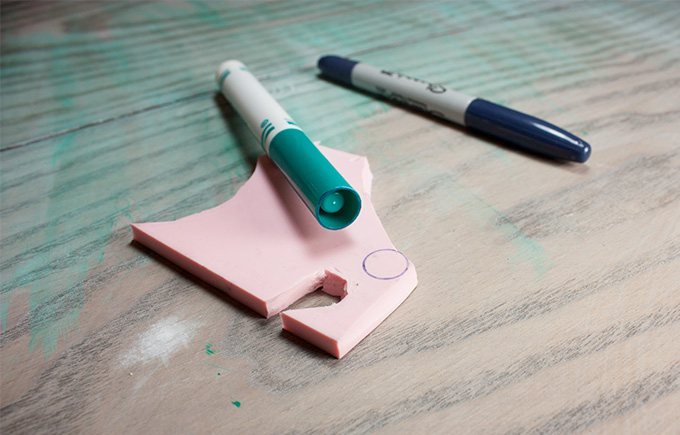
From 2014-2016 I chronicled my crafty endeavors on the site Adventures-in-Making. I’ve selected a few of those DIY’s, Recipes, and other posts to share on the site.
***
In advance of their Fall Conference, Schoolhouse Craft asked me to write a little post with some business advice, and I decided to take the time to write about one of the things I’ve learned from running the store.
One of the best things about my job is that I have daily chances to interact with customers and creative types. I don’t even have to try! They just walk through my door, and react to my work. I didn’t do a great job with this before I opened the shop (although I always encouraged friends to let me critique their work.) It takes a lot of courage to ask the tricky questions about your work and your business.
The benefits of that back-and-forth are so valuable, and will encourage you to push your work in new directions, to perfect your business, and to be a well-rounded maker. Since not everyone has the benefit of sitting in a gift store, so I thought I would share some ideas for bringing a little creative input your way.
The Kind Of Things You Might Ask About
You probably already have a good base of people to ask about these things. It’s worthwhile to keep adding to you collection, but in the meantime be sure to get feedback as often as you can.
Feedback On Your Products As A Whole.
This is the hardest thing to ask for, and the hardest advice to take, but it’s incredibly important for the development of your work and business. Encourage your audience to be candid– and make sure to take a deep breath before reading anything that might be negative.
Your Packaging And Promotional Materials.
Ask people to proofread for you, and offer edits. Make sure to run it by people who have no idea what you’re working on– it should make sense after they see everything.
Shipping And Bagging Procedures.
Send a package to a friend, and see if everything makes it there alright. Ask people what they are looking for when they buy a similar product- do they want a cute bag and tissue? A gift box? A Thank You card?
Your Prices
Ask if they would pay that for a similar product. This is also a good opportunity to ask what things you can add or change to give more perceived value.
Suggestions Of Materials, Tools, And Techniques.
This is a great thing to run by people who work with similar processes, but you might even get good results from out-of-the-box solutions from people who have a completely different knowledge base. Some people can be close-mouthed about their technique- but I think that sharing information is good for everyone involved.
Advertising and Networking Opportunities
Is there a chance to reach your niche audience that you haven’t considered?
Sales Opportunities
You can try all day an never round-up all the craft shows, shops, events, and other great places to sell you goods. Other artists can give you ideas of what has worked for them, and non-artist friends have surely seen great opportunities too.
Other Business Practicalities
like software or person for booking and accounting, an excellent Lawyer (like these business lawyers in houston, just in case), Liabilities you might not have thought of, etc.
Other Ways to Get Feedback
There are ways other than one-on-one question pestering to get your questions answered.
Through Your Employees
If you have them, your employees know your business better than anyone else because they are what makes it run. Ask them regularly if there are any changes that can be made to improve the work you’re doing and the products you’re putting out. There is often one or two employees that do the most work and provide the best feedback to benefit your business. If you’re only a small business then you can’t afford to lose these employees. Luckily, you can talk to UK key person insurance specialists to see how you can cover your business against the loss of a key employee like this. If you ask your employees to help improve the business then they will feel like a bigger part of the team and want to contribute more to its success.
Attend Conventions And Meetups For Creative Businesses.
(Like Schoolhouse Craft.) Be sure to schmooze and look for people who have similar interests- and get contact information for everyone.
Make a Mailing List
Put together an email list of people who are willing, and who you can count on to give you honest feedback. When you have a new design, run it by your list, and see what they have to say. Rather than sending out the emails to everyone on the list manually, use an email software to do it for you. I like to use Mailerlite – see how it compares against the popular Mailchimp by reading this mailerlite vs mailchimp write-up.
Join or Start A Facebook Group for Creative Feedback
You can keep it private, if you don’t want just anyone to see what you’ve got going on.
Offer To Look At The Work Of Other People
Giving advice is a great chance to work on your own experience, and it you help people, they are more likely to help you with feedback down the road.
Befriend People with Different Backgrounds and Experience
People with lots of opinions and ideas. People like your friendly local shop owner. You know the one….


















































You must be logged in to post a comment.